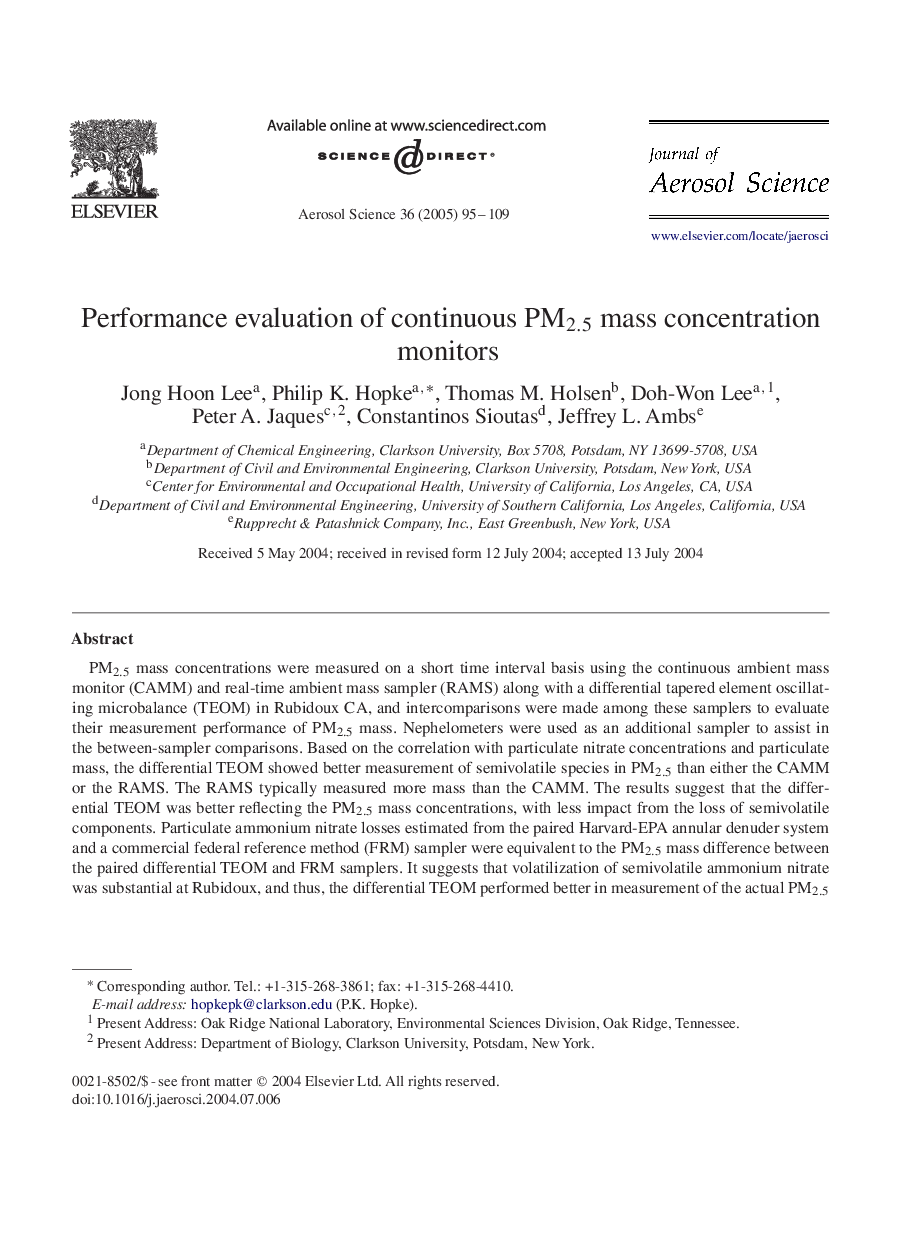| Article ID | Journal | Published Year | Pages | File Type |
|---|---|---|---|---|
| 9460521 | Journal of Aerosol Science | 2005 | 15 Pages |
Abstract
PM2.5 mass concentrations were measured on a short time interval basis using the continuous ambient mass monitor (CAMM) and real-time ambient mass sampler (RAMS) along with a differential tapered element oscillating microbalance (TEOM) in Rubidoux CA, and intercomparisons were made among these samplers to evaluate their measurement performance of PM2.5 mass. Nephelometers were used as an additional sampler to assist in the between-sampler comparisons. Based on the correlation with particulate nitrate concentrations and particulate mass, the differential TEOM showed better measurement of semivolatile species in PM2.5 than either the CAMM or the RAMS. The RAMS typically measured more mass than the CAMM. The results suggest that the differential TEOM was better reflecting the PM2.5 mass concentrations, with less impact from the loss of semivolatile components. Particulate ammonium nitrate losses estimated from the paired Harvard-EPA annular denuder system and a commercial federal reference method (FRM) sampler were equivalent to the PM2.5 mass difference between the paired differential TEOM and FRM samplers. It suggests that volatilization of semivolatile ammonium nitrate was substantial at Rubidoux, and thus, the differential TEOM performed better in measurement of the actual PM2.5 mass concentrations, including semivolatile and non-volatile PM, with less loss of semivolatile materials from the filter.
Related Topics
Physical Sciences and Engineering
Earth and Planetary Sciences
Atmospheric Science
Authors
Jong Hoon Lee, Philip K. Hopke, Thomas M. Holsen, Doh-Won Lee, Peter A. Jaques, Constantinos Sioutas, Jeffrey L. Ambs,
